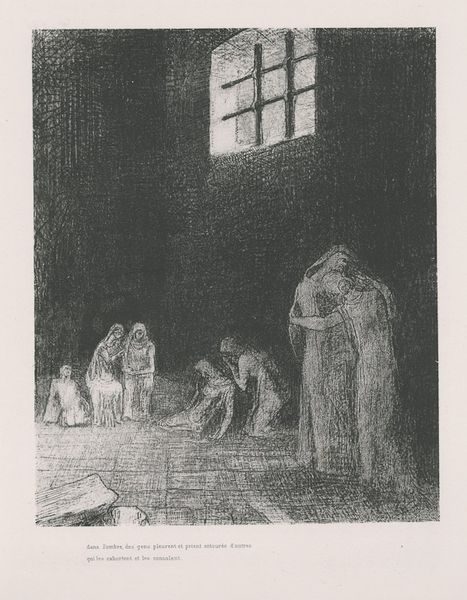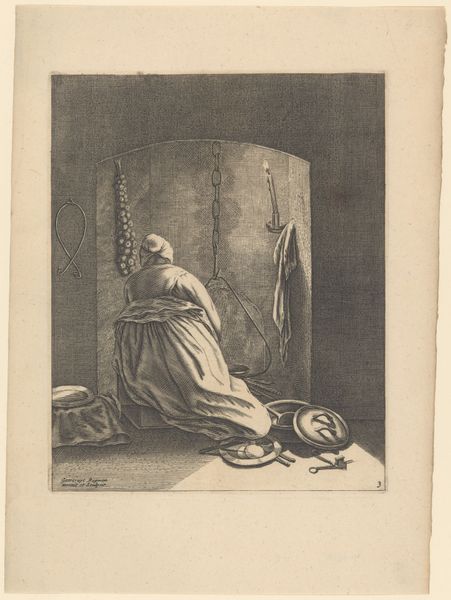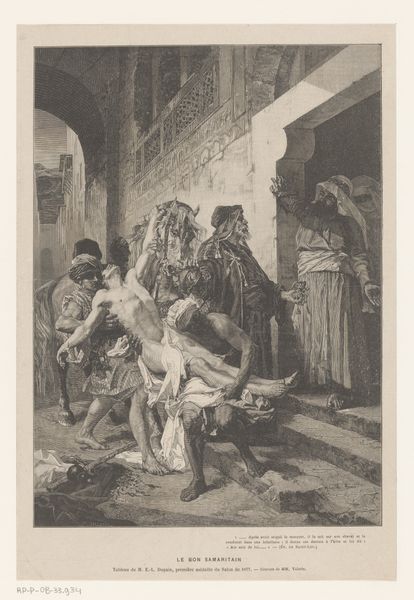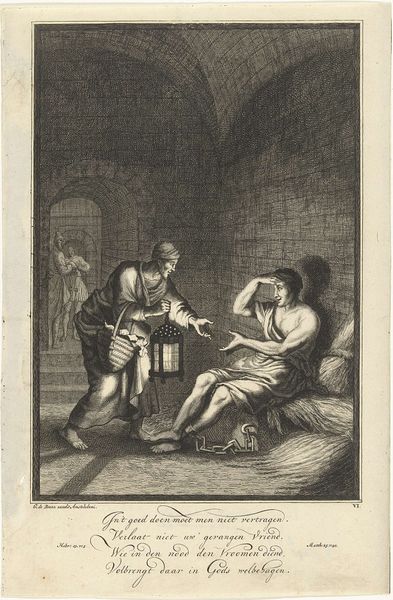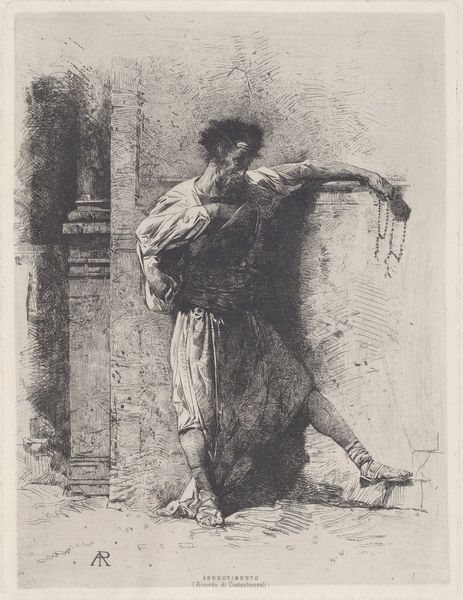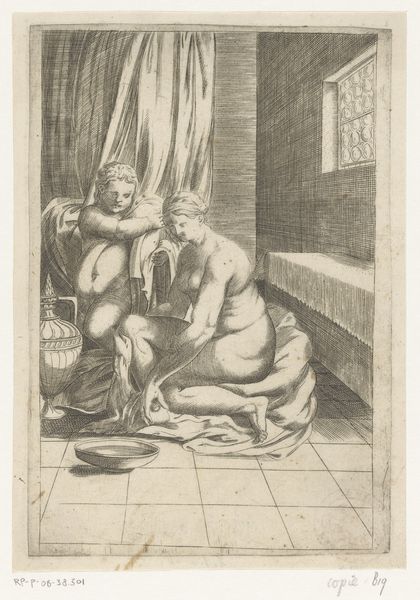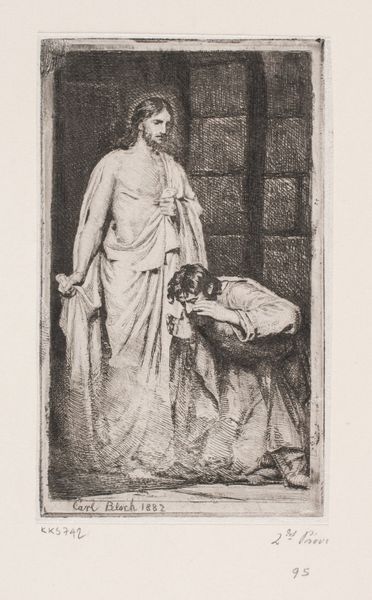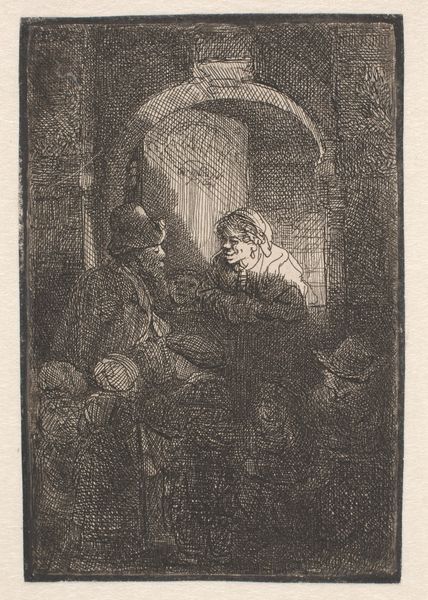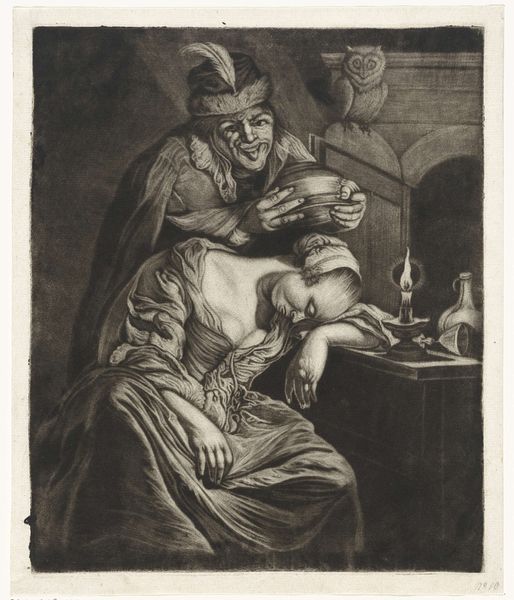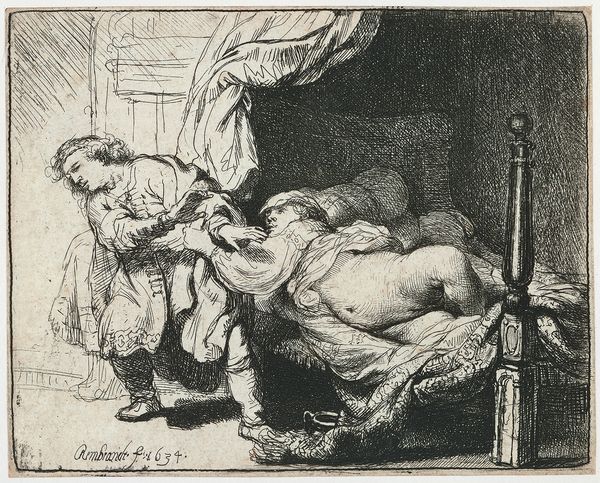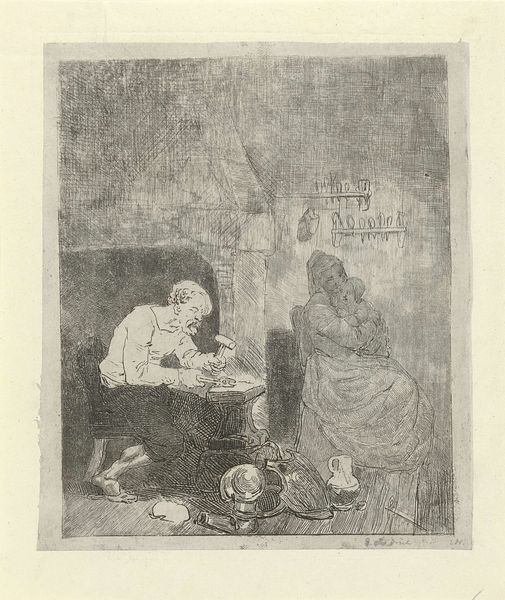
drawing, lithograph, print, paper, ink
#
pencil drawn
#
drawing
#
narrative-art
#
lithograph
# print
#
charcoal drawing
#
figuration
#
paper
#
ink
#
pencil drawing
Dimensions: 237 × 172 mm (image); 271 × 194 mm (primary support); 433 × 297 mm (secondary support)
Copyright: Public Domain
Charles Rambert created this lithograph, Plate Five from Misery, in 1851. Lithography is a printmaking process using a flat stone or metal plate on which the image areas are worked using a greasy substance so that the ink will adhere to them, while the non-image areas are made ink-repellent. Here, Rambert uses this technique to create an image of profound despair. Look at the texture of the stone walls, achieved through layering tiny strokes. Notice how this meticulous process emphasizes the stark reality of the prisoner's confinement. The material qualities of the printmaking serve the artist’s desire to represent poverty in mid-nineteenth-century France. Lithography, by its nature, is reproducible, allowing for wide distribution of images, and thus, of social commentary. The amount of work that went into the production of this print, and the relative ease with which it could be distributed, speaks volumes about the politics of the time. It suggests the potential for art to be both a craft and a powerful form of protest.
Comments
No comments
Be the first to comment and join the conversation on the ultimate creative platform.
